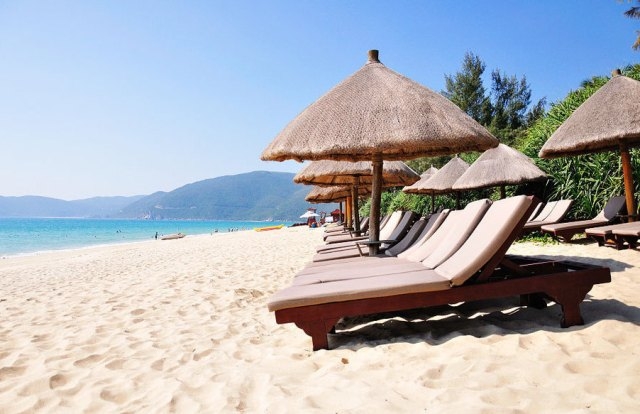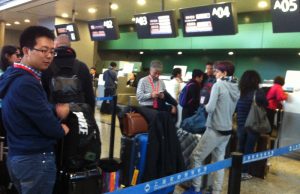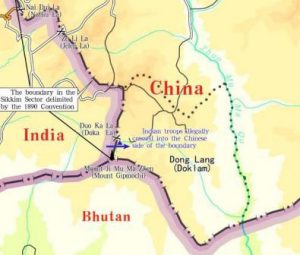Top 10 family summer destinations in China

The summer holiday is one of the best times to go on vacation with family members, especially children in China. Thanks to the country’s diverse topography, there is an extensive list of destinations catering to different tastes. Here are some fun summer getaways to get your family’s planning started.
1. Hulunbuir Grasslands
Located in northeastern Inner Mongolia, the Hulunbuir Grasslands are considered to be the “most unsullied grasslands” in China. Named after the Hulun and Buir lakes, the grasslands feature forests, rivers and lakes. After the month of May, the green grassland is dotted with colorful flowers, birds, and cattle and sheep scattered among the grasses. There are also various local activities, including horse and camel riding, horse racing and wrestling.
2. Kanas Lake
Kanas Lake is located in the Altay Prefecture of Xinjiang Uygur autonomous region. The lake sits in a valley in the Altai Mountains, near the very northern tip of Xinjiang, and the province borders with Kazakhstan, Mongolia, and Russia. The lake was formed around 200,000 years ago during the Quaternary period as a result of glacier movement. The local tourism information office compares Lake Kanas, which is located at around 48°N, with Lake Léman (the Genève Lake) in Switzerland and France (46°N), due to similarities in climate and scenery.
3. Puzhehei, Yunnan province
Located in northwest Qiubei county, Zhuang-miao autonomous prefecture in Wenshan, Yunnan province, Puzhehei is a scenic spot with many places for camping among areas surrounded by big lakes which are very popular with visitors. Its beauty lies not only in its natural landscape such as karst lakes, peaks and canyon views, but also in man-made features such as ancient rock paintings, revolution commemorations and unique ethnic customs.
4. Shangri-La
The remote place is now a dreamland to domestic and international travelers, after the mythical Shangri-La was first described to world readers by British writer James Hilton in his 1933 novel The Lost Horizon.
5. One-Thousand-Household Miao Village
Known as the biggest Miao village in the world, the One-Thousand-Household Miao Village of Xijiang is located 36 kilometers northeast of Leishan County in the Qiandongnan Miao and Dong Autonomous Prefecture, southeastern Guizhou. It consists of more than ten naturally formed villages that have been long inhabited by nearly 1,300 Miao households (hence the name).
The village cluster, known as an open-air museum, displays the authentic and well-preserved distinctive culture and customs of the Miao people. Visitors can take a peek at original Miao dances, customs, rites, costumes and silver ornaments.
The Miao people have their typical architectural characteristic: wooden houses built tier upon tier on the hillside, dotted with bamboo groves. Lying amidst green mountains, the village enjoys beautiful settings, with the terraced fields rising up along the slopes and the crystal-clear Baishui River flowing through. It offers a more spectacular view when it’s lit up in the evening.
6. Shapotou
Shapotou Desert is located on the southern edge of the Tengger Desert. It is the site of the world-renowned Shapotou Desert Experimental Research Station. There is also singing sand in Shapotou. Thousands of domestic tourists descend upon Shapotou each year to enjoy the natural scenery and partake in various activities on and around the 100-metre high dunes. It has a width of 2,000 meters and a height of 100 meters with an inclination of 60 degrees. When standing at the foot of the sand hills, you can see what looks like a waterfall, but is actually sand.
7. The ancient Silk Road
Earlier this month, the UNESCO World Heritage Committee added a section of the ancient trade route of the Silk Road to the World Heritage list. The 33 historical sites in the Silk Road project run through China, Kazakhstan and Kyrgyzstan, with 22 located in China’s Shaanxi, Henan and Gansu provinces and the Xinjiang Uygur autonomous region. The project includes Buddhist sites, military passes and ancient city remains.
8. Wulong, Chongqing
The photo shows an ancient style courier station located in Wulong county of Chongqing municipality, which was featured in Zhang Yimou’s movie Curse of the Golden Flower (2006). A hotspot for filming, Wulong’s fascinating landscape was also featured in recent blockbuster “Transformers: Age of Extinction” and the second season of popular Chinese reality show “Dad, Where Are We Going?”
9. Chengdu
Chengdu city, located in southwestern China’s Sichuan province, is known for its laid-back vibe. Jinli Street, downtown Chengdu’s main commercial street, is the epitome of the leisurely way of life the city has come to be associated with. Illuminated by the red lanterns which decorate the antique shops and snack stalls lining the narrow flagstone pavement, Jinli is abuzz with life after nightfall.
10. Sanya
Located at South China’s Hainan province, Sanya is considered the best place for families to enjoy a beach holiday in China.
Courtesy : China.org.cn/cnta.gov.cn July 8 , 2014














